Neuengamme Concentration Camp
Photos of Memorial Site by Bonnie
M. Harris
 Entrance to Neuengamme
Memorial Site, July 2006
Photo Credit: Bonnie
M. Harris
Entrance to Neuengamme
Memorial Site, July 2006
Photo Credit: Bonnie
M. Harris
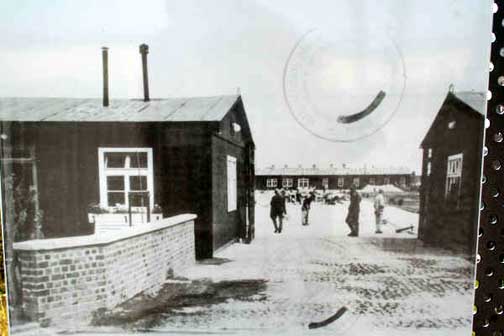 Display shows how the
original entrance looked
Photo Credit: Bonnie
M. Harris
Display shows how the
original entrance looked
Photo Credit: Bonnie
M. Harris
The former Neuengamme concentration camp,
located in the Neuengamme District of Hamburg, Germany, was converted
into a Memorial Site in 1965. Neuengamme was used by the Nazis
as a forced labor camp from December 13, 1938 to May 4, 1945,
when it was liberated by British troops. It was used by the British
as Civil Internment Camp Number 6 for suspected German war criminals
from 1945 to 1948, and finally as the Vierlande Correction Center
for German criminals.
The two photos above show the entry into
the former Neuengamme concentration camp as it looks today and
as it looked in 1940. The original foundations in the ditch of
the curved brickwork bridge that was demolished in 1953 can still
be seen in the first photo, taken in July 2006.
The Neuengamme Concentration Camp was
established by the SS on December 13, 1938 when 100 inmates from
Sachsenhausen were moved to an abandoned brickwork factory near
Hamburg Germany, for the purpose of constructing a forced labor
camp. The foundry belonged to the Metallwerke Neuengamme, also
known as the Walther-Werke and was intended for the manufacture
of wrought iron components in the production of munitions. The
brick factory was reopened to supply bricks for Hitler's construction
projects in the city of Hamburg.
The two photos below show one of the
original buildings in the Neuengamme camp, as it looks today
and as it looked in 1940.
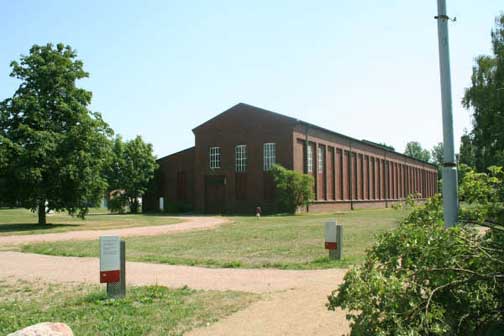 Photo Credit: Bonnie
M. Harris
Photo Credit: Bonnie
M. Harris
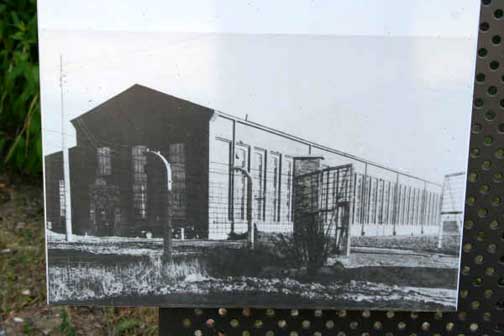 Photo Credit: Bonnie
M. Harris
Photo Credit: Bonnie
M. Harris
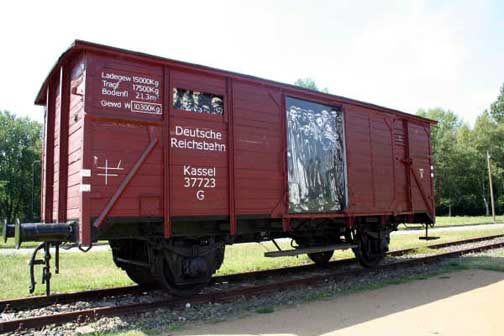 Prisoners were transported
to the camp in railroad cars like this
Photo Credit: Bonnie
M. Harris
Prisoners were transported
to the camp in railroad cars like this
Photo Credit: Bonnie
M. Harris
In order to facilitate the expansion
of the camp, work began on bringing railroad tracks to the camp
in early 1942. These tracks were used both to transport production
goods out of the camp and prisoners into the camp on the company
goods wagons. During an international youth camp in 1994, the
historic goods wagon pictured above was installed on the site
of the camp rail station and the tracks were partially reconstructed.
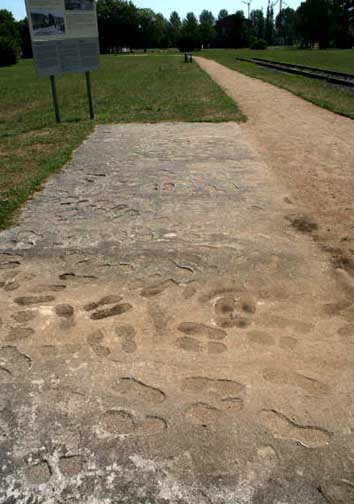 Footprints in a space
the exact size of a boxcar
Photo Credit: Bonnie
M. Harris
Footprints in a space
the exact size of a boxcar
Photo Credit: Bonnie
M. Harris
In order to demonstrate how tightly packed
prisoners were in the railway cars, a concrete surface the exact
size of the interior of the railcar bears the imprint of 80 sets
of footprints, showing how cramped conditions were during transportation
when prisoners had to stand or crouch for days.
|